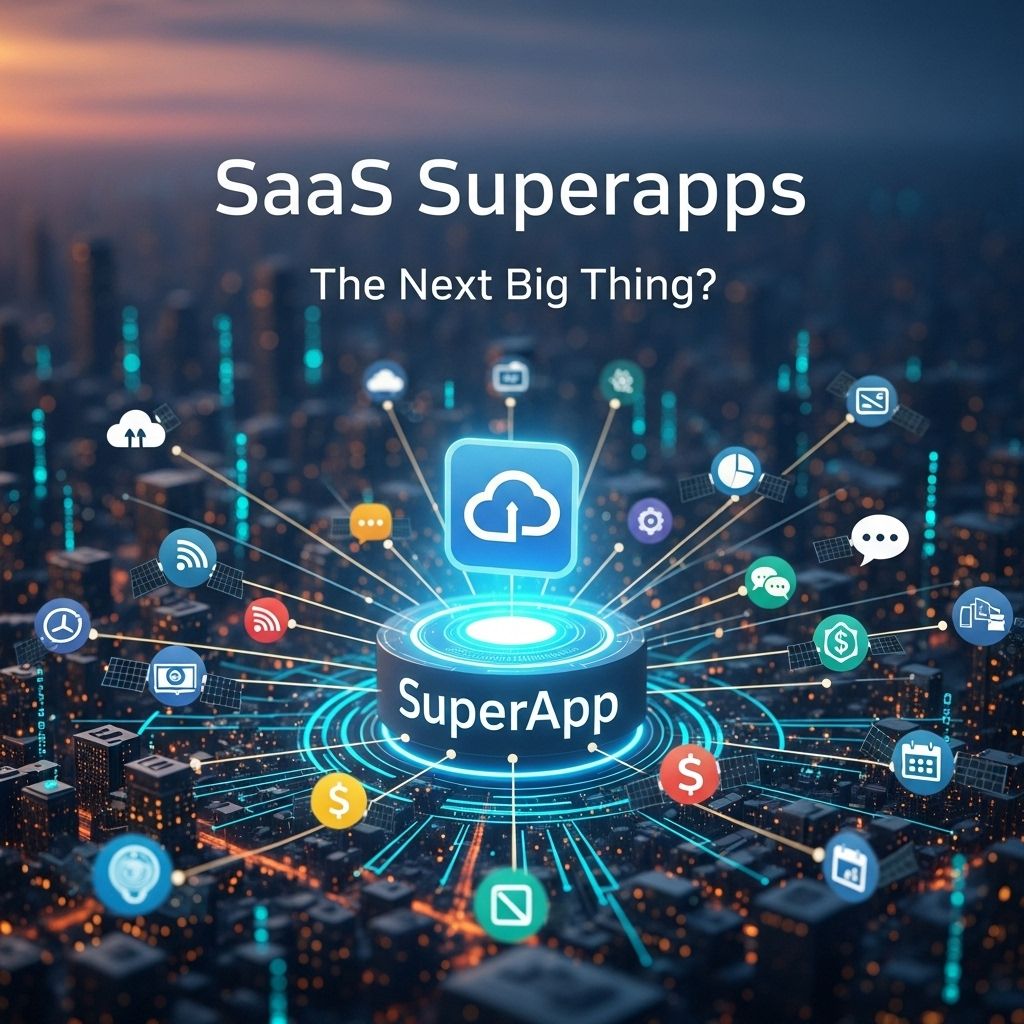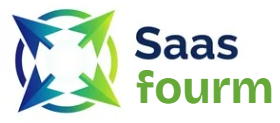The Evolution of Enterprise Software: From Fragmented Tools to Unified Platforms
For years, businesses have embraced Software-as-a-Service (SaaS) solutions as the cornerstone of digital transformation. While these specialized tools delivered significant value in specific areas like HR, finance, and sales, they’ve created a new challenge: the SaaS silo problem. Employees now juggle multiple platforms with different interfaces, logins, and workflows, while critical business data remains scattered across disconnected systems. This fragmentation undermines productivity and prevents organizations from gaining a comprehensive view of their operations.
The solution to this growing problem is emerging in the form of SaaS superapps—a single platform that integrates multiple business functions into a cohesive experience. This evolution represents more than just another software trend; it signals a fundamental shift in how enterprises approach digital transformation. By consolidating disparate tools into unified ecosystems, superapps promise to eliminate context switching, streamline workflows, and unlock new levels of operational efficiency. As enterprises look to maximize their digital investments, the superapp model is rapidly transitioning from an Asian phenomenon to a critical component of Western business strategy.

Understanding the SaaS Superapp Phenomenon
What Exactly Is a SaaS Superapp?
A SaaS superapp is an integrated platform that combines multiple business applications and services within a single interface, eliminating the need for employees to constantly switch between different tools. Unlike traditional SaaS solutions that address specific functional needs, superapps create a unified digital ecosystem where users can access HR, finance, project management, communication, and other critical functions without leaving the platform. This approach transforms the user experience from a collection of disconnected point solutions to a seamless workflow environment.
The concept originated in Asia, where platforms like WeChat in China, Grab in Southeast Asia, and Paytm in India became dominant by offering comprehensive digital experiences that addressed multiple aspects of daily life. As medium.com explains, these platforms emerged as “the first block, led by China, [which] would become dominated by so-called Super Apps or Everything apps. Apps that were packed so full of features that, they aimed to replace most, if not all, of consumers’ apps in a single package.” Now, this concept is making its way to enterprise software with profound implications for business operations.
The SaaS Silo Problem and Its Business Impact
The proliferation of specialized SaaS tools has created significant challenges for modern enterprises:
- Productivity Drain: Employees waste an average of 2.1 hours per day switching between applications
- Data Fragmentation: Critical insights remain locked in isolated systems
- Security Risks: Multiple login credentials increase vulnerability exposure
- Integration Costs: Custom integrations consume valuable IT resources
| Challenge | Traditional SaaS Approach | Superapp Solution |
|---|---|---|
| User Experience | Multiple interfaces, logins, and workflows | Single unified interface with consistent experience |
| Data Management | Disconnected data silos requiring manual reconciliation | Unified data model with real-time cross-functional insights |
| Implementation | Individual tool onboarding and training | Streamlined onboarding with consistent UI/UX patterns |
| Security | Multiple authentication points to manage | Centralized security protocols and compliance management |
The transition from SaaS silos to superapps represents a fundamental shift in enterprise digitalization strategy. As finclip.com notes, “While this approach has brought clear benefits, it has also introduced new challenges. Employees often juggle multiple platforms, switching between different interfaces, logins, and workflows. Data is spread across disconnected systems, making it difficult to gain a comprehensive view of operations.”
Why Superapps Are the Future of Enterprise Software
The Business Case for SaaS Superapps
The business case for adopting superapps is compelling when viewed through the lens of productivity, cost efficiency, and strategic agility. Traditional SaaS implementations often create what analysts call “integration debt”—the cumulative cost of maintaining connections between disparate systems. Superapps eliminate this burden by designing integration into the platform architecture from the outset. This architectural advantage translates directly into faster time-to-value, reduced maintenance costs, and greater flexibility to adapt to changing business needs.
The enterprise superapp market is poised for explosive growth, with Gartner predicting that “by 2027 the superapp concept will also expand to include enterprise mobiles and desktop experiences, such as workflow, collaboration, and messaging platforms” htcinc.com. This forecast underscores the inevitability of superapps becoming the dominant enterprise software paradigm within the next few years.
Key Benefits Driving Enterprise Adoption
SaaS superapps deliver substantial value across multiple dimensions:
- Enhanced Productivity: Unified workflows eliminate context switching and streamline business processes
- Data-Driven Decision Making: Integrated data sources provide comprehensive operational visibility
- Reduced IT Complexity: Fewer vendors and platforms simplify the technology stack
- Improved User Adoption: Intuitive interfaces and consistent experiences increase engagement
- Faster Innovation Cycles: Modular architecture enables rapid deployment of new capabilities
“SuperApps began as one-stop digital hubs. Need to message someone? Book a ride? Pay a vendor? You could do it all in one place. In countries like China, WeChat became more than a social platform — it became digital infrastructure.” boss.tech
This consumer experience is now being adapted for enterprise use, with business superapps delivering similar benefits within organizational contexts. The most successful implementations go beyond simple feature consolidation to create cohesive ecosystems where functionality is intelligently connected to support natural business workflows.
Overcoming Implementation Challenges
Addressing Common Superapp Adoption Hurdles
While the benefits of superapps are substantial, organizations face several challenges when transitioning from traditional SaaS approaches:
- Legacy System Integration: Migrating existing workflows and data requires careful planning
- Change Management: Users accustomed to specialized tools may resist platform consolidation
- Vendor Selection: Not all superapps deliver on their promises of true integration
- Customization Balance: Maintaining platform integrity while accommodating business needs
The key to successful implementation lies in recognizing that superapps aren’t just about technology—they represent a fundamental shift in how organizations approach business processes. Companies that treat superapp adoption as a digital transformation initiative rather than a simple software upgrade achieve significantly better outcomes.
Best Practices for Superapp Implementation
To maximize the value of SaaS superapps, businesses should follow these strategic implementation practices:
- Start with Process Mapping: Identify your most critical workflows before selecting a platform
- Phased Adoption Approach: Implement core functions first, then expand to additional capabilities
- Change Champion Network: Develop internal advocates across departments to drive adoption
- Data Governance Framework: Establish clear protocols for data management within the unified platform
- Continuous Optimization: Treat implementation as an ongoing process, not a one-time project
Pro Tip: Conduct a thorough “SaaS inventory” before selecting a superapp platform. Document all current tools, their usage metrics, integration points, and pain points. This analysis will help identify which functions should be prioritized in your superapp strategy and prevent redundant capabilities from being carried forward.
The Competitive Landscape of SaaS Superapps
Current Market Players and Differentiators
The enterprise superapp market is rapidly evolving, with several categories of players emerging:
- Established SaaS Providers: Companies like Microsoft (with Microsoft 365) and Salesforce (with their platform approach) are expanding their ecosystems
- Niche Superapp Developers: Specialized platforms focusing on specific industries or business functions
- Enterprise Integration Platforms: Tools that can create superapp-like experiences by connecting existing systems
| Provider Type | Examples | Key Strengths | Considerations |
|---|---|---|---|
| Established SaaS Ecosystems | Microsoft 365, Salesforce Platform | Strong existing user base, comprehensive feature sets | May require significant retraining, potential for feature overload |
| Specialized Superapp Platforms | Industry-specific solutions | Deep domain expertise, tailored workflows | Limited scalability outside core focus areas |
| Integration-First Approaches | Platforms using low-code tools | Flexibility to connect existing investments | May lack the seamless experience of purpose-built superapps |
As the market matures, organizations must carefully evaluate how different approaches align with their specific business needs rather than simply chasing the “superapp” label.
The Strategic Roadmap: Preparing for the Superapp Era
Building Your Superapp Strategy
Developing an effective superapp strategy requires moving beyond technology considerations to focus on business outcomes. Organizations should:
- Conduct a Digital Maturity Assessment: Understand your current capabilities and readiness for platform consolidation
- Identify High-Impact Integration Points: Focus on workflows where integration delivers the greatest value
- Establish Clear Success Metrics: Define how you’ll measure the impact of consolidation (productivity gains, cost reduction, etc.)
- Develop a Vendor Evaluation Framework: Create criteria specific to your business needs rather than generic feature checklists
The most successful superapp implementations begin with a clear understanding of business processes rather than technology capabilities. This approach ensures that the platform serves business needs rather than forcing business processes to conform to technological constraints.
Future-Proofing Your Superapp Investment
As Gartner’s prediction suggests, the superapp concept will continue to evolve rapidly over the next few years. Organizations should prioritize flexibility and extensibility when selecting platforms to ensure their investment remains relevant as the market matures.
Pro Tip: Look for superapp platforms with robust ecosystem capabilities that allow you to add specialized functionality through trusted third-party partners. This approach gives you the best of both worlds—the streamlined experience of a superapp with the ability to incorporate best-of-breed solutions where needed.
Conclusion: The Inevitable Shift to Unified Business Platforms
The transition from fragmented SaaS tools to integrated superapps represents the next logical stage in enterprise digitalization. As businesses seek to overcome the limitations of SaaS silos and unlock new levels of operational efficiency, the superapp model offers a compelling path forward. While challenges exist in implementation and adoption, the potential benefits in productivity, data visibility, and business agility make superapps an investment worth pursuing.
For US businesses, the lesson from Asian markets is clear: the future belongs to platforms that provide comprehensive business solutions rather than narrow point solutions. Organizations that embrace this shift early will gain a significant competitive advantage as the superapp era transforms enterprise software landscapes globally.
The question isn’t whether superapps will become the standard for enterprise software—it’s how quickly your organization can adapt to this inevitable evolution. By developing a strategic approach focused on business outcomes rather than technology features, companies can successfully navigate this transition and position themselves for success in the integrated business platform era. As the digital transformation journey continues, the enterprises that thrive will be those that harness the power of unified platforms to drive innovation, efficiency, and growth.
